Soft Sourdough Hawaiian Rolls (King's Hawaiian Copycat)
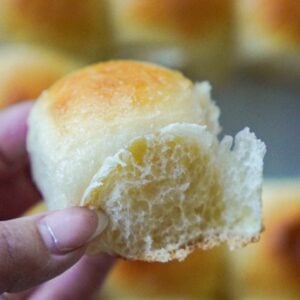
Ingredients
Stiff Sweet Sourdough Starter
- 40 g water
- 20 g sourdough starter
- 20 g sugar (or honey)
- 80 g bread flour
Tangzhong
- 18 g bread flour
- 88 g whole milk
Main Dough
- All of the stiff sweet starter
- All of the tangzhong (cooled)
- 85 g milk (warmed to 90°F/32°C)
- 1 egg (room temperature)
- 1 egg yolk (room temperature)
- 50 g sugar (See Notes for adjusting)
- 11 g milk powder (optional, but adds additional softness)
- 270 g bread flour (12.7-13.5% protein)
- 7 g sea salt
- 56 g unsalted butter
Before Baking
- 1 egg
- 8 g powdered sugar
After Baking
- 8 g butter, melted
- 8 g powdered sugar (or canned pineapple juice or honey)
Instructions
- Before you begin: this recipe includes instructions for hand mixing or using a stand mixer.
Make the Stiff Sweet Starter (Evening Before)
- In the early evening, mix 40 g water, 20 g sourdough starter, 20 g sugar, and 80 g bread flour in a glass jar. Knead outside of the jar to fully incorporate the ingredients. Cover loosely and let ferment in a warm place until morning. See Notes for timing and tips.
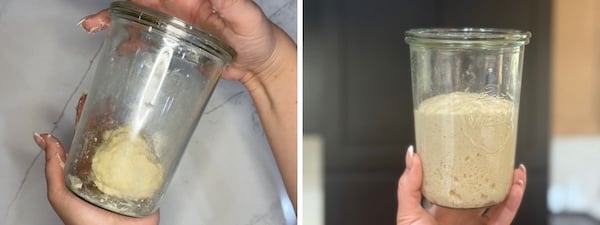
Prepare Dough (The Next Morning)
- In the morning, set out 56 g unsalted butter to soften. Put your two eggs in a bowl of warm water to quickly bring them to room temperature.
- To make the tangzhong, whisk together 18 g bread flour and 88 g whole milk. Microwave in 20-second intervals until thickened and reaches 150°F (65°C), about 2-3 rounds total. Pop it in the fridge for 5-10 minutes, or until it has cooled down to room temperature.*See Notes for stovetop instructions.
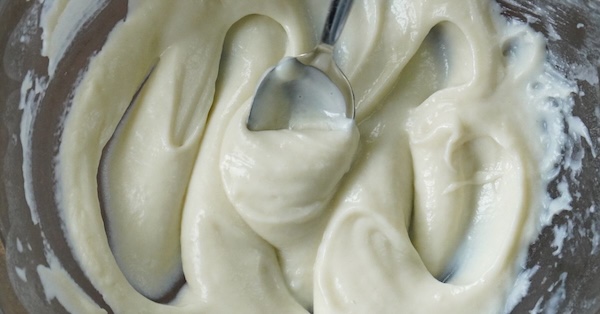
- If mixing by hand: In a glass mixing bowl, warm 85 g milk to about 90°F/32°C (about 20 seconds in the microwave). Add 1 egg, 1 egg yolk, and 50 g sugar. Then, add All of the stiff sweet starter, All of the tangzhong, 270 g bread flour, 11 g milk powder (optional), and 7 g sea salt. If you aren't using the milk powder, add an equal amount of additional bread flour. Knead the dough, switching to slap and folds for faster incorporation if desired. Work the dough until the ingredients are fully combined, about 3 minutes. The dough will be sticky and shaggy. However, if it does not have the same texture as mine in the photo, please add additional flour in 1 tbsp increments. Cover and let rest for 30 minutes.If using a stand mixer: Add all ingredients to your stand mixer, except for the butter. Mix on low speed for about 10 minutes. Dough will be sticky and shaggy – it will not pull away from the sides of the bowl. Cover and let rest for 30 minutes.
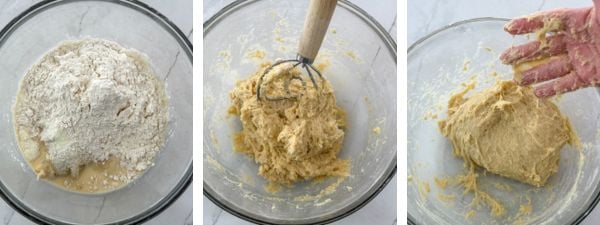
- If mixing by hand: Spread all of your softened butter on top of the dough. Pinch and squeeze the butter into the dough (think of lobster hands!) until it's mostly incorporated. Switch to slap and folds on your counter until the dough smooths out. This process takes 4-5 minutes. Cover and let rest for 30 minutes.If using a stand mixer: Add half of the softened butter to the bowl and mix on low speed until combined. Add the remaining butter and mix until fully incorporated and the dough smooths out. Move dough to a greased glass bowl and cover for 30 minutes. Proceed with the rest of the recipe as written.
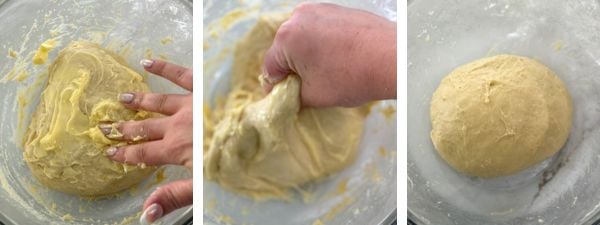
- Strengthen the dough for 2-3 minutes via stretch and folds, kneading, the Rubaud method, slap and folds – whatever floats your boat!
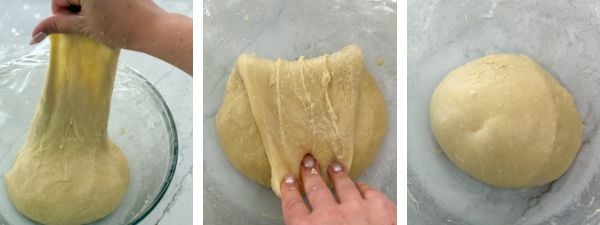
- First rise: Place your bowl in a warm spot (75-80°F/24-26.5°C is ideal) for 3-5 hours, or until the dough has relaxed, puffed up slightly, and is showing signs of fermentation. There should be small bubbles around the sides and under the surface of the dough.
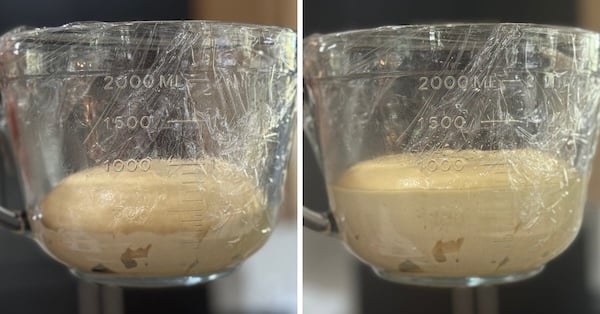
Shape the Rolls (Mid-Day)
- Long fermentation option: You can refrigerate the unshaped dough after the first rise, or shape the rolls and refrigerate the pan overnight. Just let them finish rising at room temperature the next day before baking.
- Dump out the dough and weigh it. Divide the total weight by 24 (it should be about 31-34g per roll). Divide the dough into 24 equal pieces. Shape the pieces into taut balls, using bench flour to avoid sticking. Place shaped balls into a greased 9x13 baking dish.
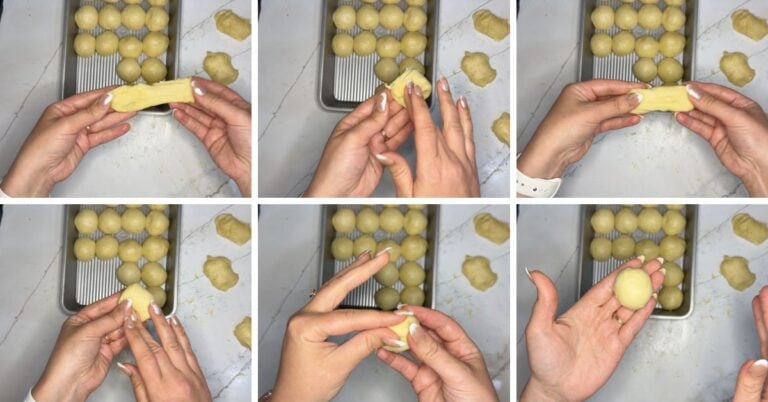
- Cover with plastic wrap and let rise until the rolls are touching each other and feel light and pillowy when you gently tap the surface. In a 77°F (25°C) environment, this took 6 hours, but your timing may vary.
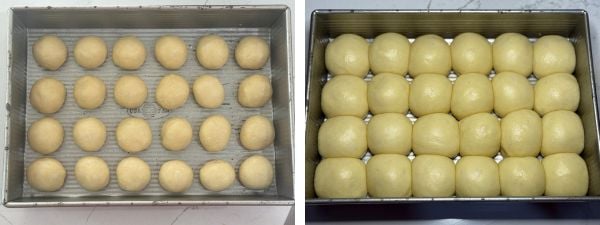
Bake the Rolls (Early Evening)
- Preheat oven to 400°F (205°C) conventional (not convection). Whisk together 1 egg with 8 g powdered sugar. Brush on top of the rolls and bake for 12 minutes. Then, lower the oven temperature to 350°F (175°C), and bake for an additional 5-15 minutes (rotate the pan partway through), or until golden brown on top with an internal temperature of about 195°F (90°C).
- In a small bowl, combine 8 g butter, melted with 8 g powdered sugar. Brush baked rolls with the mixture. Let cool for about 10 minutes; then, turn out onto a cooling rack.
Notes
Milk substitution: You can substitute water or any nut milk for the milk in the tangzhong or the dough.
Sugar: increase to 75g for super sweet or lower to 25g for mildly sweet (for 24 rolls)
Stiff sweet starter: It takes 10-16 hours to peak (less time if your home is warm, more time if your home is cool), so I suggest feeding your starter before or around dinnertime. It’s better to use a past peak starter than one that’s still rising. Before using your stiff sweet starter in this recipe, ensure it has tripled in size, smells sweet and yeasty, and has tons of bubbles all around the jar and on the surface. If it isn’t there yet, put in a warm place and give it a few more hours. Then, start the recipe.
Tangzhong: You can make the tangzhong up to 2 days in advance; keep in fridge. You can also make the tangzhong on the stovetop if you prefer. Heat over medium heat until the mixture reaches about 150°F(65°C) and is thick like pudding.
Nutrition
Calories: 99kcalCarbohydrates: 16gProtein: 2gFat: 3gSaturated Fat: 2gPolyunsaturated Fat: 0.2gMonounsaturated Fat: 1gTrans Fat: 0.1gCholesterol: 14mgSodium: 123mgPotassium: 36mgFiber: 0.4gSugar: 4gVitamin A: 93IUVitamin C: 0.04mgCalcium: 17mgIron: 0.2mg